What are the key conventions of Horror?
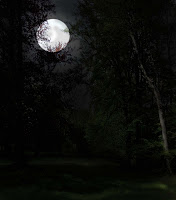 Many elements make up a horror movie and there are many conventions which piece together to allow a director to create the horror effect. I am going to distinguish the key conventions of the horror genre and apply them to 3 main horror movies which I have studied; Halloween (1978); The Shining (1982) and Eden Lake (2008.)
Many elements make up a horror movie and there are many conventions which piece together to allow a director to create the horror effect. I am going to distinguish the key conventions of the horror genre and apply them to 3 main horror movies which I have studied; Halloween (1978); The Shining (1982) and Eden Lake (2008.) To begin with, setting is a very big part of a horror movie. If the setting isn’t right then the film will be a disaster. In horror movies, the setting tends to fit into one of the following categories. Firstly a small community, or an isolated place which allows the thought of the community to encase a secret which may be triggered. Secondly comes places with past history which will return, one that is used considerably is an old abandoned house. These normally are ex-homes/lunatic asylums that have different levels including cellars and attics. These are all places for our horrors/monsters to
To begin with, setting is a very big part of a horror movie. If the setting isn’t right then the film will be a disaster. In horror movies, the setting tends to fit into one of the following categories. Firstly a small community, or an isolated place which allows the thought of the community to encase a secret which may be triggered. Secondly comes places with past history which will return, one that is used considerably is an old abandoned house. These normally are ex-homes/lunatic asylums that have different levels including cellars and attics. These are all places for our horrors/monsters to 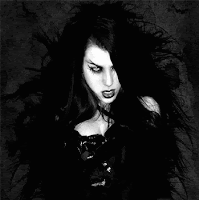 inhabit. For example attics are high above the four walls in which we live but how safe are we? They connote repressed terrors and cellars; our primitive instincts. Finally with setting 99% of main horrors take place in the dark. Although action may take place in the daylight, main killings are normally at night. Some horrors have the ‘tough’ guys messing about during the daylight but when it gets dark the monster is unleashed ‘out of hours!’ All of the horror movies I have studied are suitable for this convention but the one I feel fits in most would have to be ‘The Shining.’ The reason for this is because that after Jack and
inhabit. For example attics are high above the four walls in which we live but how safe are we? They connote repressed terrors and cellars; our primitive instincts. Finally with setting 99% of main horrors take place in the dark. Although action may take place in the daylight, main killings are normally at night. Some horrors have the ‘tough’ guys messing about during the daylight but when it gets dark the monster is unleashed ‘out of hours!’ All of the horror movies I have studied are suitable for this convention but the one I feel fits in most would have to be ‘The Shining.’ The reason for this is because that after Jack and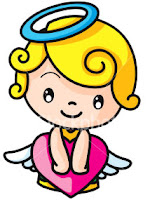 his family have travelled to the hotel there are no other real settings throughout the movie. All of the action takes place at the hotel whether it be loving Danny or killing Haloran. As well as being isolated, the hotel has many different levels and its ‘past’ is Grady killing his wife and two daughters. Daylight and night-time are mixed a lot through this film so at some points it is hard to see whether it is light or dark. At the end of the movie however, we see Danny and Jack running through the maze and this is one (if not the only) scene that happens outside the hotel once they have arrived. It fits in with the point of dark events and the darkness does also connote evil.
his family have travelled to the hotel there are no other real settings throughout the movie. All of the action takes place at the hotel whether it be loving Danny or killing Haloran. As well as being isolated, the hotel has many different levels and its ‘past’ is Grady killing his wife and two daughters. Daylight and night-time are mixed a lot through this film so at some points it is hard to see whether it is light or dark. At the end of the movie however, we see Danny and Jack running through the maze and this is one (if not the only) scene that happens outside the hotel once they have arrived. It fits in with the point of dark events and the darkness does also connote evil. Another convention used is the way the camera is used to create different effects. Extreme Close Ups (ECU) are used many times throughout a horror film. They place 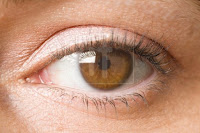

the audience in the eyes of the victim which allows audience identification. This effect can be used, as I have already said, to identify with the victim but also builds tension and suspense as you don’t know where the creature/monster is. We could also reverse this effect by having a sudden ECU to the monster’s eyes/face which would be seen as invasion of our personal space. You must not confuse ECU shots to Point of View (POV)  shots. A POV actually puts the camera (the audience) into the eyes of that character. These POV shots can be used in a wide range of effects to connote different situations. For example, hand-held connotes unsteadiness and often puts the audience into the monsters’ eyes. A long take, for example, the beginning of “Halloween” shows the bad deeds that a monster may do or a major part of the narrative. A good example of this would again be “The Shining” where Jack is using an axe to break down the door and he uses the famous line “Here’s Johnny!” which we then see an ECU of his face looking out of shot. This shot exaggerates his facial expression and puts the makes the audience feel like Jack is invading their personal space which, I think, is the intended effect.
shots. A POV actually puts the camera (the audience) into the eyes of that character. These POV shots can be used in a wide range of effects to connote different situations. For example, hand-held connotes unsteadiness and often puts the audience into the monsters’ eyes. A long take, for example, the beginning of “Halloween” shows the bad deeds that a monster may do or a major part of the narrative. A good example of this would again be “The Shining” where Jack is using an axe to break down the door and he uses the famous line “Here’s Johnny!” which we then see an ECU of his face looking out of shot. This shot exaggerates his facial expression and puts the makes the audience feel like Jack is invading their personal space which, I think, is the intended effect.
 shots. A POV actually puts the camera (the audience) into the eyes of that character. These POV shots can be used in a wide range of effects to connote different situations. For example, hand-held connotes unsteadiness and often puts the audience into the monsters’ eyes. A long take, for example, the beginning of “Halloween” shows the bad deeds that a monster may do or a major part of the narrative. A good example of this would again be “The Shining” where Jack is using an axe to break down the door and he uses the famous line “Here’s Johnny!” which we then see an ECU of his face looking out of shot. This shot exaggerates his facial expression and puts the makes the audience feel like Jack is invading their personal space which, I think, is the intended effect.
shots. A POV actually puts the camera (the audience) into the eyes of that character. These POV shots can be used in a wide range of effects to connote different situations. For example, hand-held connotes unsteadiness and often puts the audience into the monsters’ eyes. A long take, for example, the beginning of “Halloween” shows the bad deeds that a monster may do or a major part of the narrative. A good example of this would again be “The Shining” where Jack is using an axe to break down the door and he uses the famous line “Here’s Johnny!” which we then see an ECU of his face looking out of shot. This shot exaggerates his facial expression and puts the makes the audience feel like Jack is invading their personal space which, I think, is the intended effect. Depth of field is very important when trying to create the, sometimes comical, effect of the monster reanimating. A 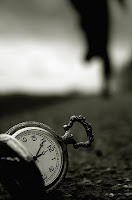 good example of this would be in “Tormented” although I haven’t studied this film we did go and see it as a media trip. In one scene Marcus (played by Tom Hopper) is in the shower after playing football and it shows a hand grab his towel. He finishes in the shower and realises his towel has gone. At this moment the focus goes from him to where his towel was. Another focus pull occurs when Darren Mullet (Zombie) has just been knocked down and Marcus has pushed his eye back into its socket. We see Marcus in focus as he thinks everything is back to normal which is when the focus pull occurs and we see Darren sit up straight to which the focus then changes to him as Marcus turns around.
good example of this would be in “Tormented” although I haven’t studied this film we did go and see it as a media trip. In one scene Marcus (played by Tom Hopper) is in the shower after playing football and it shows a hand grab his towel. He finishes in the shower and realises his towel has gone. At this moment the focus goes from him to where his towel was. Another focus pull occurs when Darren Mullet (Zombie) has just been knocked down and Marcus has pushed his eye back into its socket. We see Marcus in focus as he thinks everything is back to normal which is when the focus pull occurs and we see Darren sit up straight to which the focus then changes to him as Marcus turns around.
 good example of this would be in “Tormented” although I haven’t studied this film we did go and see it as a media trip. In one scene Marcus (played by Tom Hopper) is in the shower after playing football and it shows a hand grab his towel. He finishes in the shower and realises his towel has gone. At this moment the focus goes from him to where his towel was. Another focus pull occurs when Darren Mullet (Zombie) has just been knocked down and Marcus has pushed his eye back into its socket. We see Marcus in focus as he thinks everything is back to normal which is when the focus pull occurs and we see Darren sit up straight to which the focus then changes to him as Marcus turns around.
good example of this would be in “Tormented” although I haven’t studied this film we did go and see it as a media trip. In one scene Marcus (played by Tom Hopper) is in the shower after playing football and it shows a hand grab his towel. He finishes in the shower and realises his towel has gone. At this moment the focus goes from him to where his towel was. Another focus pull occurs when Darren Mullet (Zombie) has just been knocked down and Marcus has pushed his eye back into its socket. We see Marcus in focus as he thinks everything is back to normal which is when the focus pull occurs and we see Darren sit up straight to which the focus then changes to him as Marcus turns around. Sound is also crucial to generate the correct atmosphere in a scene/movie. A horror that uses sound effectively is “Paranormal Activity” In this film we hear many times at night footsteps from outside the bedroom. This works because all of the steps are equally distanced apart and eerily paced. We don’t see anyone besides the characters in the room yet a shadow on the wall reinforces that there is a spirit present.
 Lighting is also expressive throughout horror. Most horrors have non-realistic lighting which creates high contrast with low key lighting to emphasise shadows. Sometimes the lighting can be at weird angles to create abnormal shadows; this could be achieved if the light were placed below the object/person. One of the films I have studies achieves this effect quite successfully which is “Eden Lake” where the main protagonist and her husband are captured by a group of teens and placed on a bonfire to burn to death. The bonfire is set alight and the main female manages to escape but we can then see that the leader of the gang sets the new kid alight which suggests that he has a devilish personality as he is willing to set an innocent child alight which shows he has no mercy.
Lighting is also expressive throughout horror. Most horrors have non-realistic lighting which creates high contrast with low key lighting to emphasise shadows. Sometimes the lighting can be at weird angles to create abnormal shadows; this could be achieved if the light were placed below the object/person. One of the films I have studies achieves this effect quite successfully which is “Eden Lake” where the main protagonist and her husband are captured by a group of teens and placed on a bonfire to burn to death. The bonfire is set alight and the main female manages to escape but we can then see that the leader of the gang sets the new kid alight which suggests that he has a devilish personality as he is willing to set an innocent child alight which shows he has no mercy.Next we move on to the narrative structure of a horror movie. The classic Hollywood narrative protagonist that we see at the end is more commonly known as the “final girl.” Normally found in the slasher genre, the “final girl” survives at the end and often defeats the monster/villain. This shows the point of masochistic identification for the audience which is more complicated than that of other horror genres. A good example of this would be “Halloween.” Throughout the movie we see the life of Laurie and as an audience are forced to identify with her the whole movie. At the end we see her fight for her life as well as trying to save the little boy and girl. From this angle we can see that she could also be targeted as the hero.
A theoretical feature with the slasher horror is how a past childhood experience turns the child into a psychopathic killer. Again, “Halloween” would be a good example as the beginning of the movie shows Mike Myers killing his sister Judith with a knife. He then returns many years later and does the same. His childhood turned him into this killer and now he will strike again.
Character types are much defined in a horror and are used in many different ways. The main types are as follows;
• Wendy/Danny in The Shining
• Jenny in Eden Lake
· The Monster/Villain/Psychotic killer - • Mike Myers
• Jack
• Group of Teens
· Children - • The little Boy and Girl in Halloween
• Danny/Tony in The Shining
• Some of Brett’s gang and the little boy that sketched in Eden Lake.
Some other character types that don’t necessarily apply to my 3 studied movies are;
· Ineffectual Police
· The ‘Have a go’ Hero
· Scientists that over reach their power
· People who refuse to believe.
Finally the themes of the horror genre. Binary oppositions used in horror movies can be quite varied. For example you may get a human vs. non-human horror which is mostly exemplified with “Men In Black.” The most common in my 3 horror movies is good vs. evil. These are Jack from “The Shining” Brett’s Gang from “Eden Lake” and Mike Myers from “Halloween.” Return of the repressed is very much made a point of in “Halloween” as all of the killings being either, before or after sex. In my 3 horror movies horror has defiantly reinforced the dominant ideology of the male. All three movies have a dominant male killer/leader (Mike Myers, Jack and Brett.)
Furthermore, we can now see from the evidence above the main conventions of the horror genre and how they are seen through 3 different horror movies.





No comments:
Post a Comment